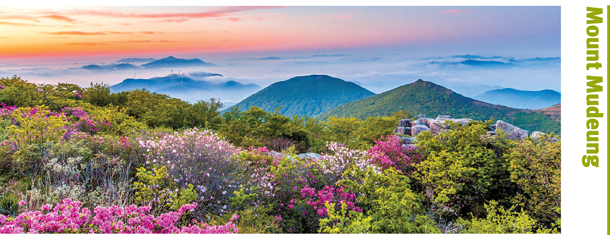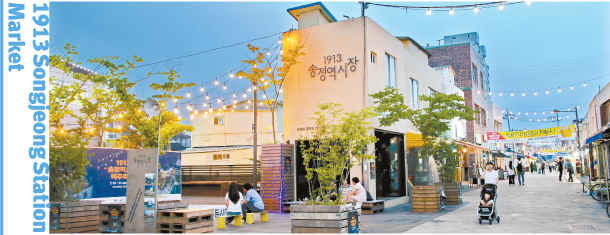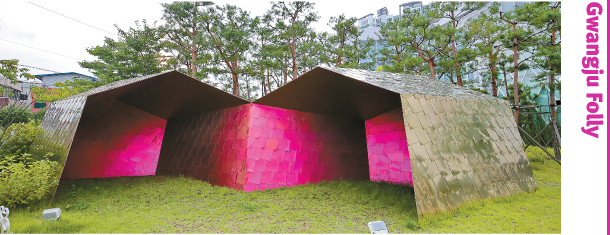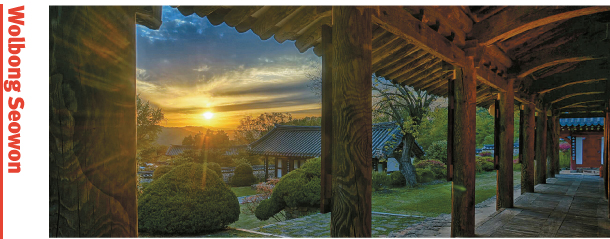In Gwangju, there’s something for everyone: From delicious meals to breathtaking views, this artistic city is filled with delights

[GWANGJU METROPOLITAN CITY]

[KIM CHUL-HO]

[KIM CHUL-HO]

[GWANGJU METROPOLITAN CITY]
Serious foodies have unique cuisines to explore, while nature lovers have many different parks to wander. Art lovers will have the chance to see how the local art scene has developed in Korea and throughout Asia, while aspiring social media influencers have many colorful places to take photos of for their new post.
The city’s downtown is filled with tall buildings one can find in any major city, yet you can also find small and colorful neighborhoods nearby. For photographers who want to share their travels on social media, Penguin Village is a must-see. The village, which got its name from a resident who walked like a penguin, has many murals featuring cute penguins. Years ago, the area was damaged by a fire, which sparked an initiative to totally overhaul its look. Residents set up a photo spot decorated with all kinds of antiques, such as melodeons and clocks. A neighboring village, aptly named Color Village, has more recently become known for its colorful walls that make the perfect background for photos. Balsan Village, another vibrant neighborhood that is home to studios of aspiring artists, also attracts visitors looking to add some joy into their day. Artists have painted the walls of their homes with fun patterns and colors.
Popular markets include Daein Market, which is open until 11 p.m. on Saturdays, and Namgwangju Market, which stays open until 11 p.m. on Fridays and Saturdays. Many restaurants and food stands will have additional chairs and tables ready in the hallway of the market to cater to more visitors. There are usually some musicians performing to entertain visitors who are restaurant-hopping.
The 1913 Songjeong Station Market is another popular spot to visit. The market is across the street from Gwangju Songjeong Station, where express trains to and from Seoul stop. Mostly travelers are sure to make some time to spend here to grab snacks or souvenirs before leaving the city. The 1913 Songjeong Station Market had a face lift recently to make it more appealing to youngsters. Traces of the past still exist, especially in the retro signs that use old school fonts.
For a night out on the town, head to Sangmu District, an area of Gwangju known for restaurants, bars and clubs. From bars that sell only Korean liquor to high-energy karaoke rooms, the area houses a variety of nighttime entertainment.
Gwangju is one of the bigger cities in Korea, but it also offers many easy escapes into nature. One of the easiest ways to breath fresh air is to visit Mount Mudeung. The mountain attracts hikers of all levels and is home to remnants of Mujin Castle. From the Sansu Mudeung Park bus station, it takes about 20 minutes to walk to the walls of the castle. From the castle, you can get a view of the entire city.
Gwangjuho Lake Eco Park is another recommended destination. Near the entrance of the park are gardens and structures decorated with flowers. As you proceed, you will walk on a wooden deck that remains in the shade thanks to the surrounding trees. The deck takes you along the lake to a rural village with farms. The park is popular among runners.

From left: Visitors to Namgwangju Market wait in line for food. The market stays open late on Fridays and Saturdays; on the bus tour program called May Bus, participants get to learn about how the citizens of Gwangju fought for democracy in the ’80s; Sangmu District is the area of Gwangju where people enjoy drinks and dancing at night. [GWANGJU METROPOLITAN CITY, THE MAY BUS, KIM CHUL-HO]
The Asia Culture Center, opened in 2016, has become a nationally important hub for the arts. Professionals can study all kinds of Asian art from the past and present, and it is also a gathering place for local citizens. During summers, it sets up a swimming pool and a water slide to attract young guests. The Sochon Art Factory offers a so-called media facade exhibition that shows videos on an exterior wall at night.
Athletics naturally go with food, whether you’re a participant or spectator, and Gwangju is known for its unique variety of Korean cuisines. Located in the southwestern part of Korea, which is far less mountainous than the host of the PyeongChang Winter Olympics, Gangwon, many options are available ranging from seafood to meat. One of the most beloved dishes for Gwangju visitors is yukjeon, pan-fried battered beef. Thin beef slices are cooked right at the table, and diners pluck them directly from the hot pan. Sangchu twigim is more of a quick bite than a meal, but you won’t find it elsewhere Korea. You take a piece of lettuce and wrap fried squid balls with onions and green peppers.
In general, the marinade and sauces used in Gwangju are stronger than in Seoul. The popular aehobak jjigae (a spicy soup with pork and zucchini) is full of umami (or gamchilmat in Korean). A bowl of kongguksu (cold noodles in bean soup) is a summer delight that every visitor should try. An even more hearty option is duck soup.
Almost all public transportation is offered free for those who have an AD card on them, an ID card for the championship event until Aug. 18. All you need to do is show your AD card to the bus driver. Be aware, town buses, also known as maeul bus in Korean, which have bus numbers ranging from 700 to 799, are not free.
If exploring the city on your own gives you a headache, one great, no-stress way to explore the city’s scenery, history and food culture is by signing up for a bus tour. The city government has prepared a special tour program called Tashow for visitors to experience a little bit of everything that Gwangju has to offer, including Wolbong Seowon where scholars centuries ago studied. The tour is available in English.
Those who are more interested in tracing the rich history of Gwangju and how it sparked Korea’s democratization movement in the ’80s should opt for the May Bus, part of the larger weekend tour program called Stories of Gwangju’s 100 Years.
This program includes actors presenting short plays depicting historical scenes. It takes you to Nongseong Plaza, the site of a fierce battle between Gwangju citizens and the military, and more. Although there is no official guide or actors explaining things in English, the leaflets and videos that play during the tour are all provided in English. For more about Tashow tour, call (010) 4538-1757. For the May Bus, call (062) 360-8502.
BY LEE SUN-MIN [summerlee@joongang.co.kr]










with the Korea JoongAng Daily
To write comments, please log in to one of the accounts.
Standards Board Policy (0/250자)